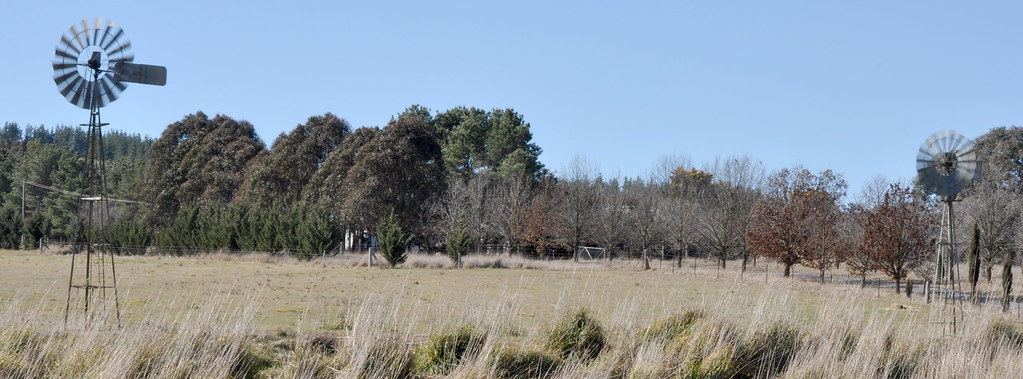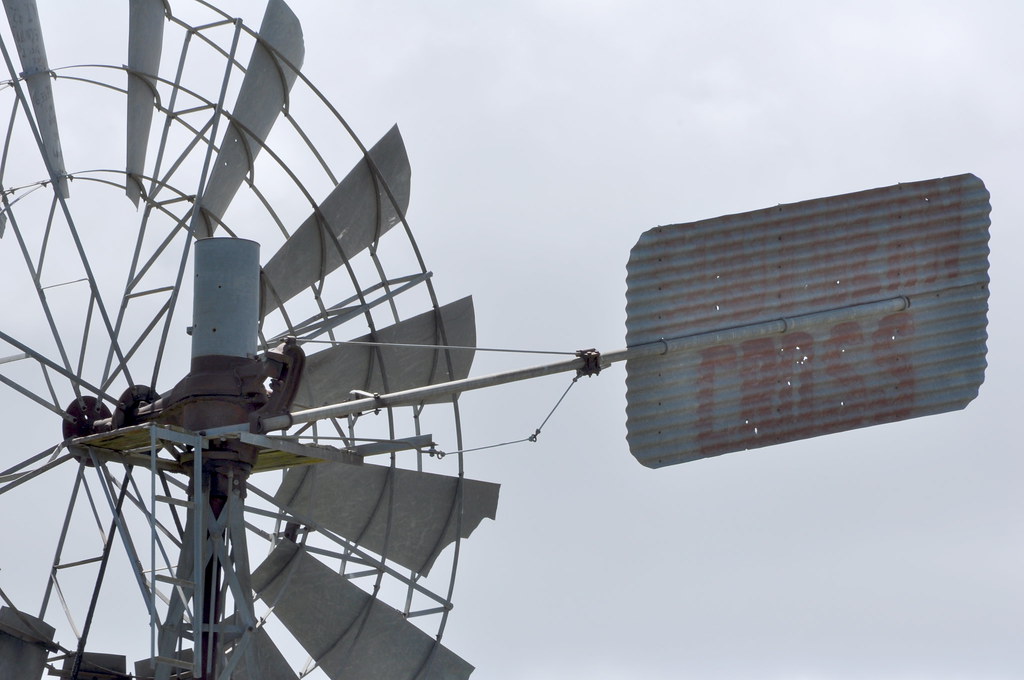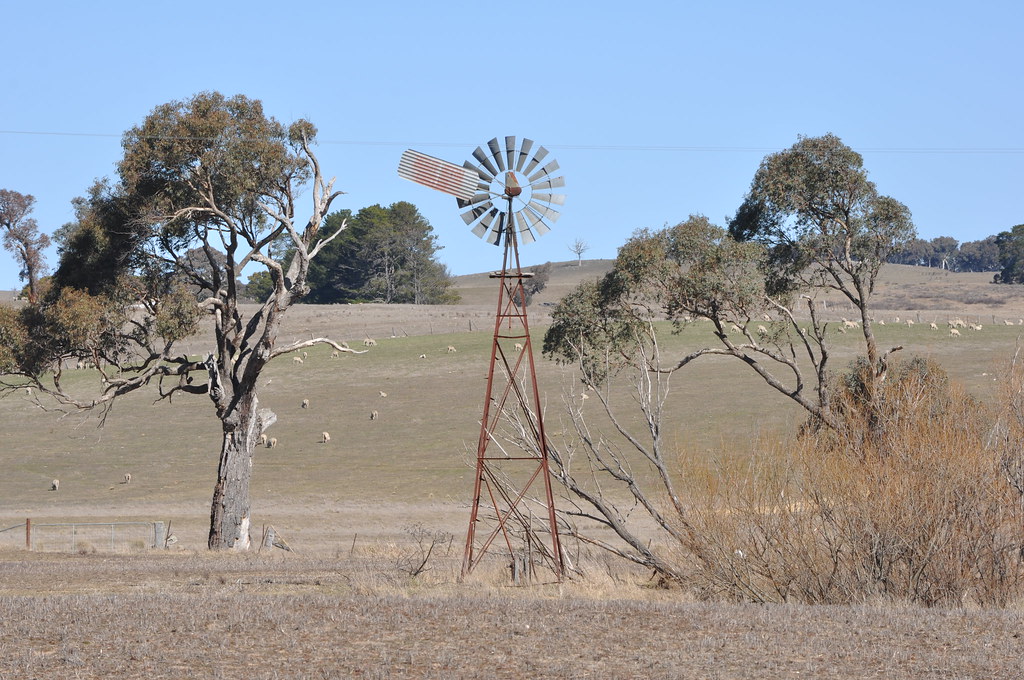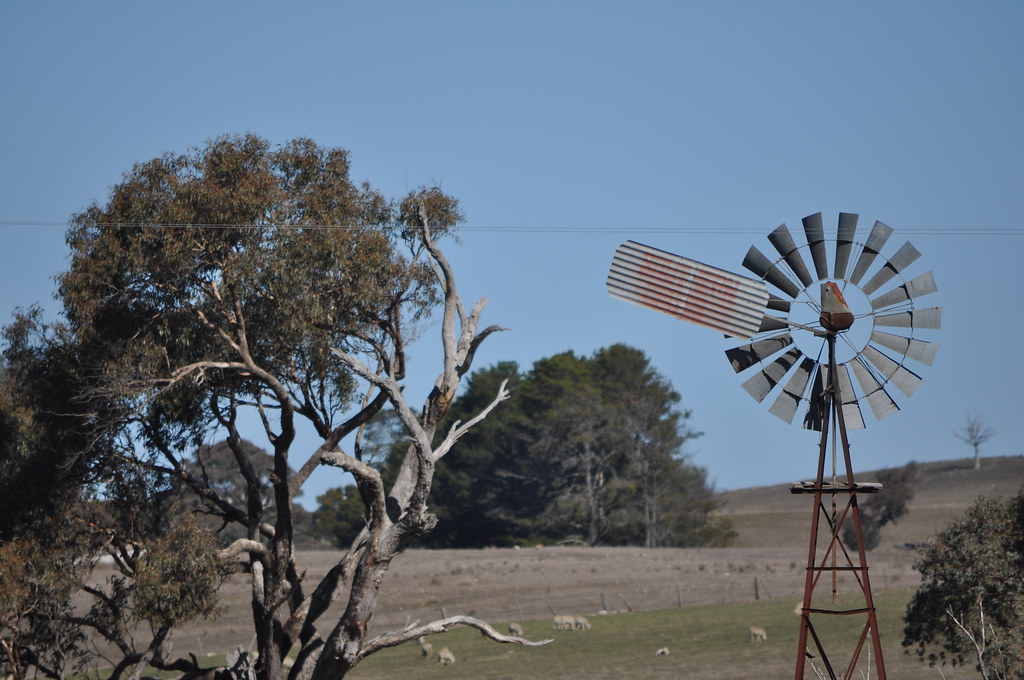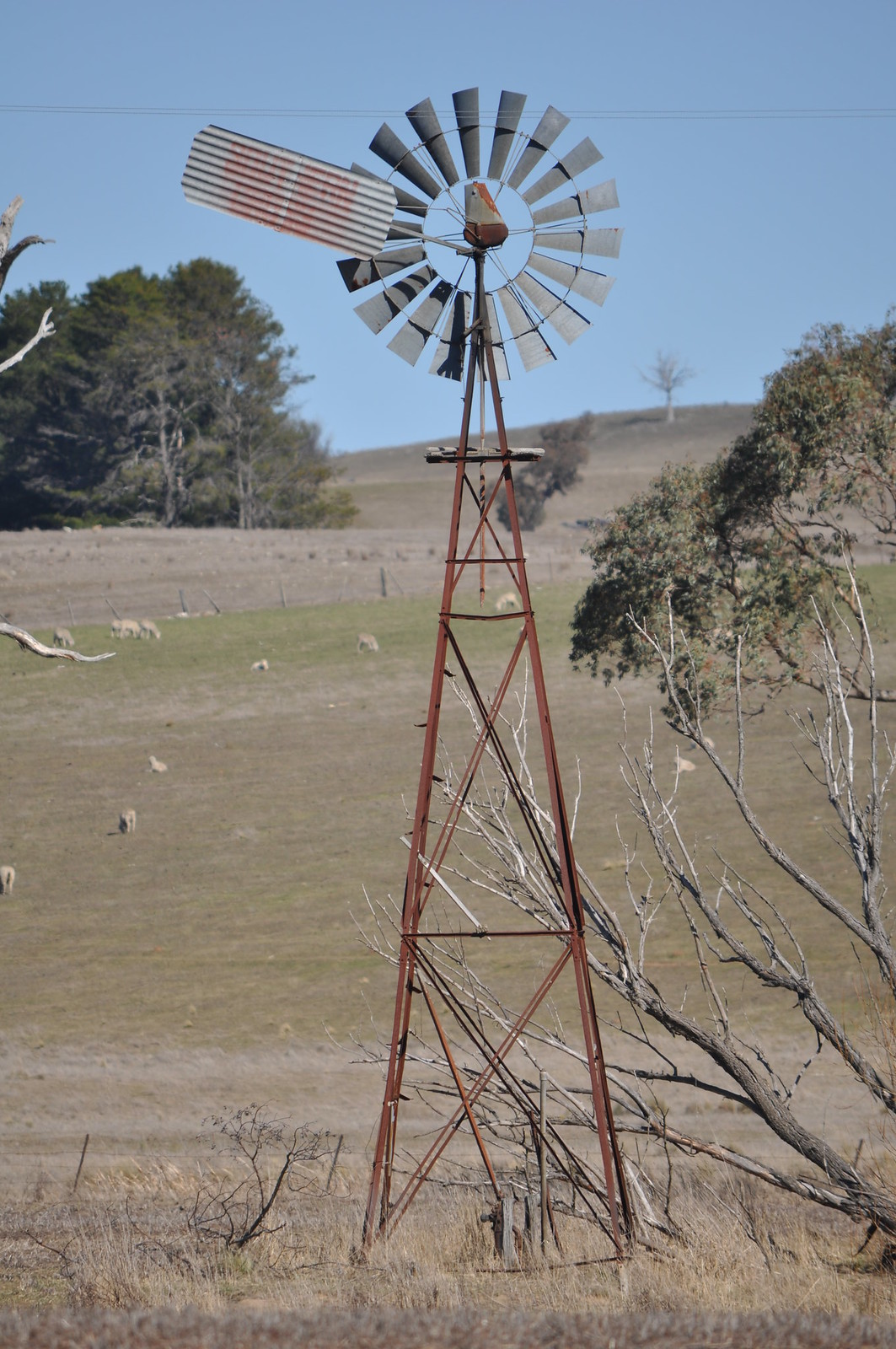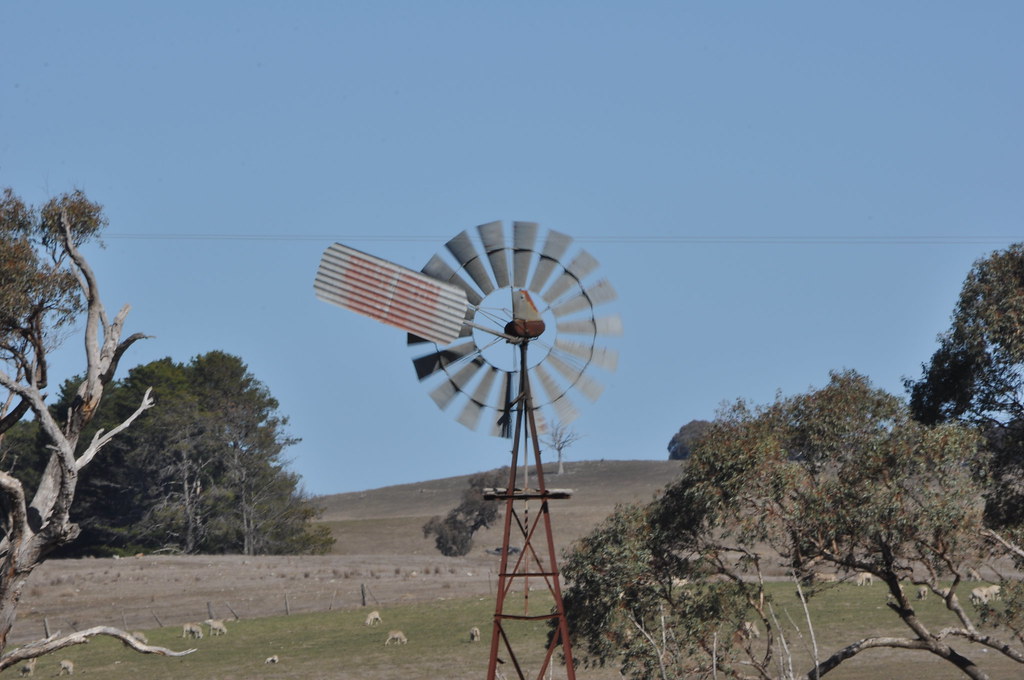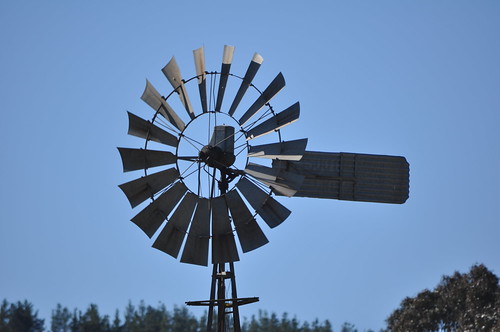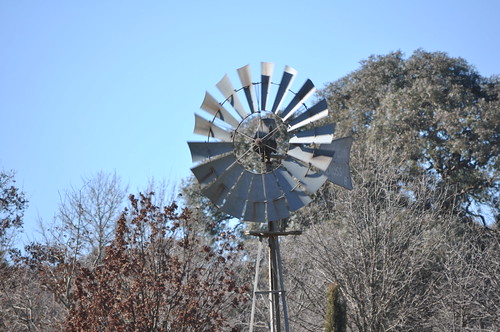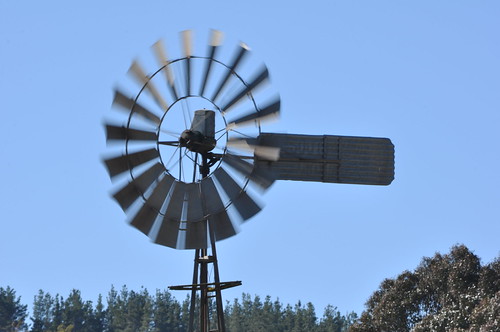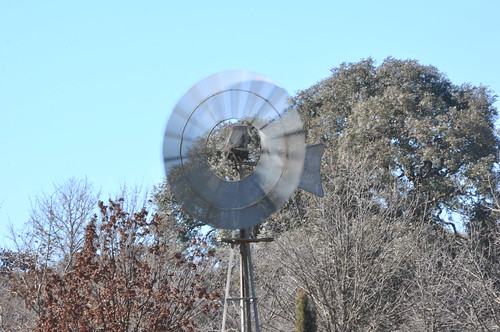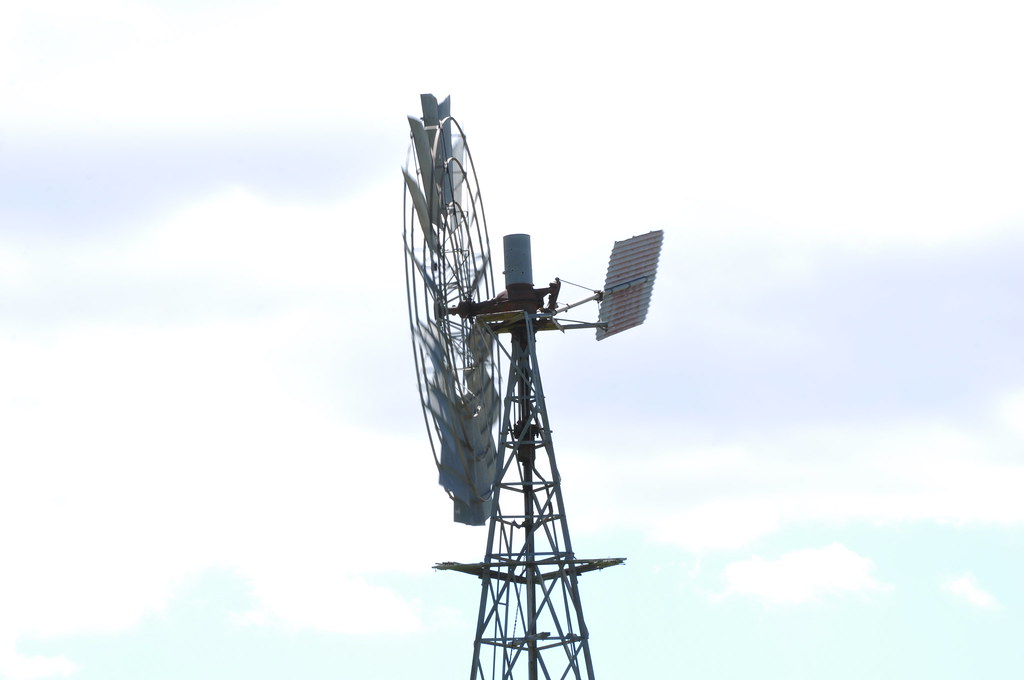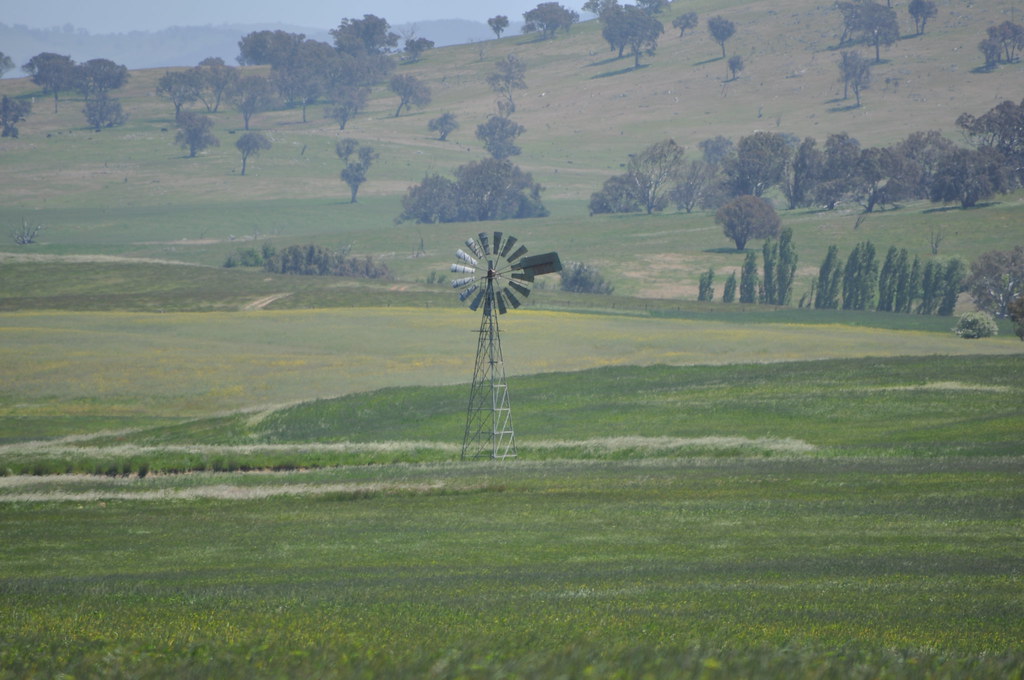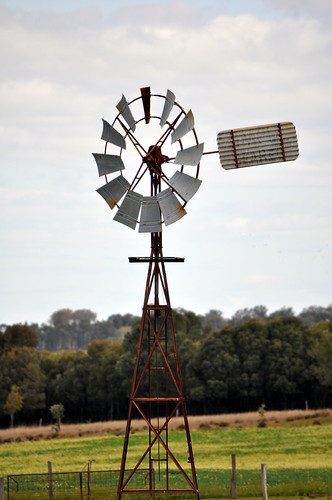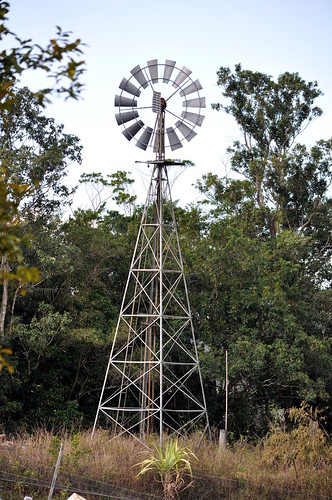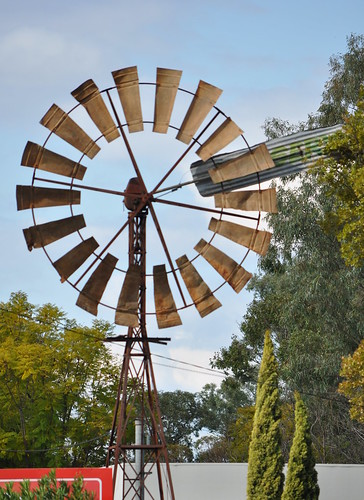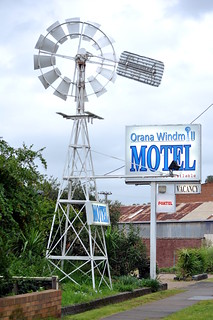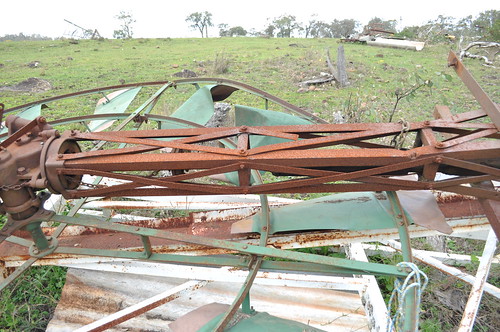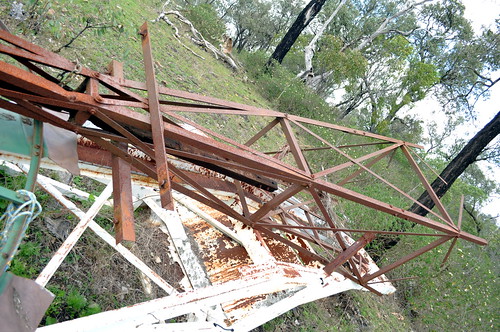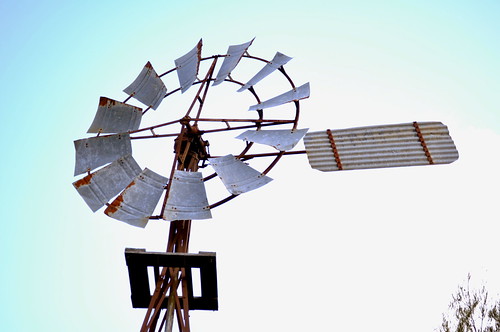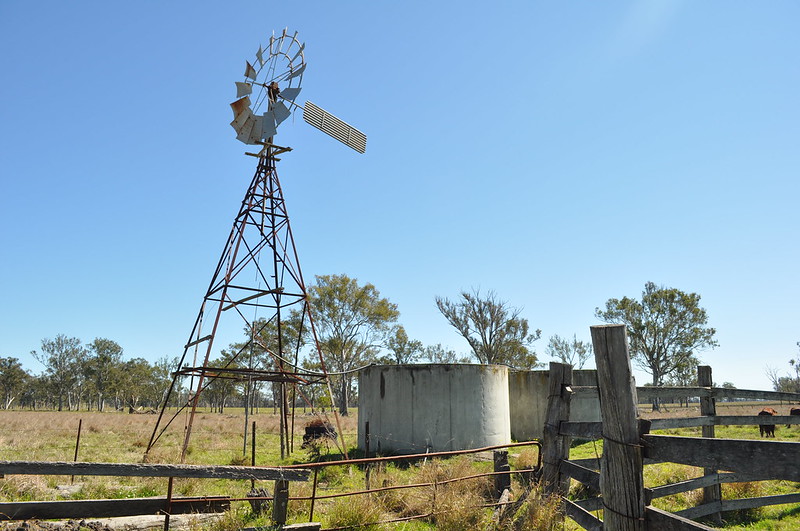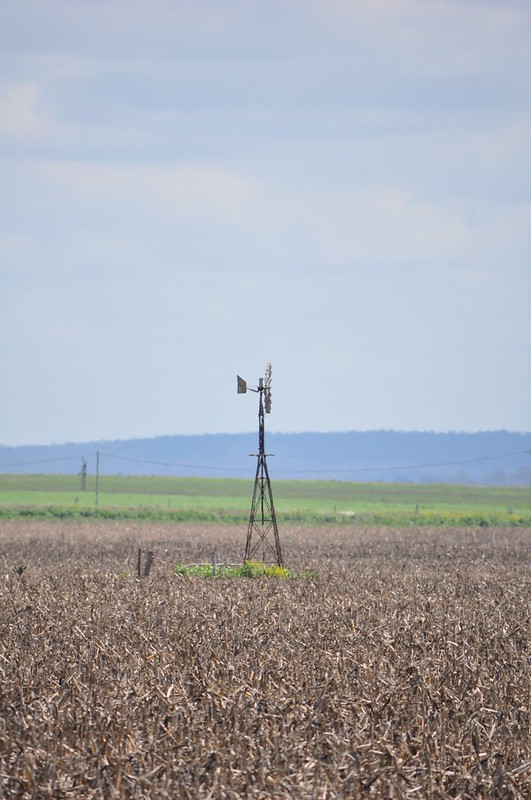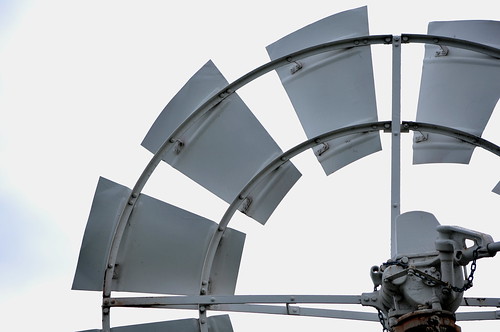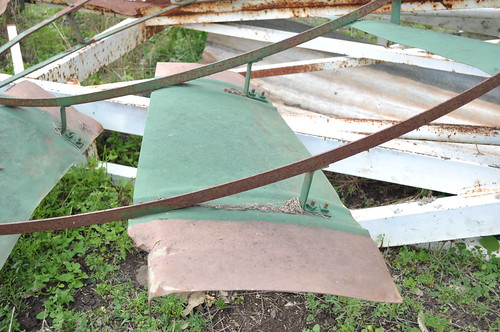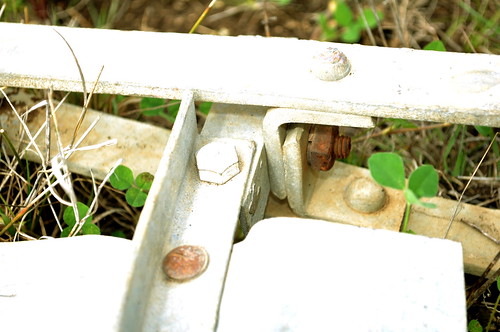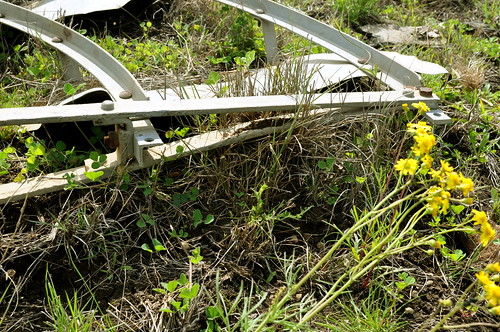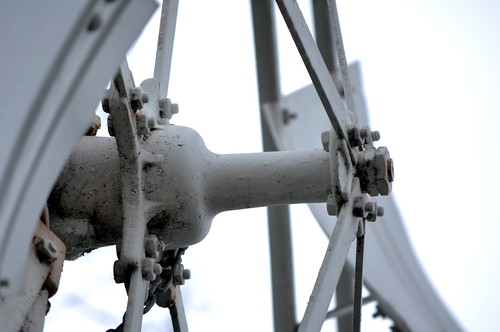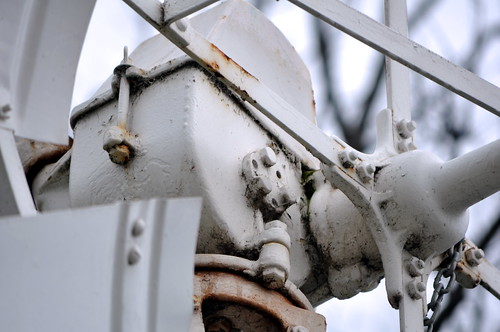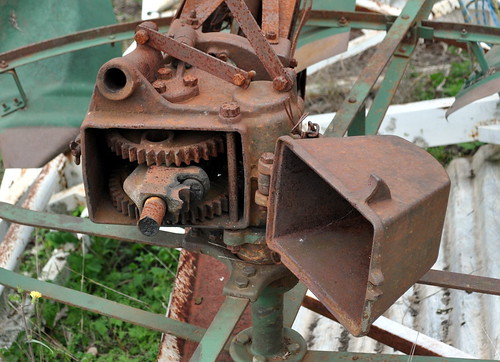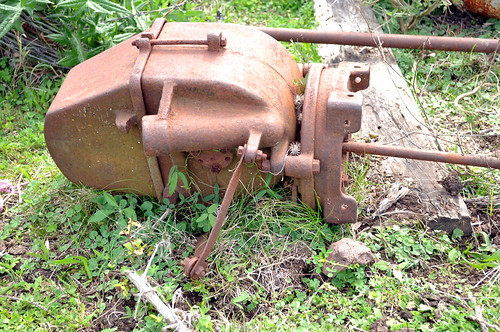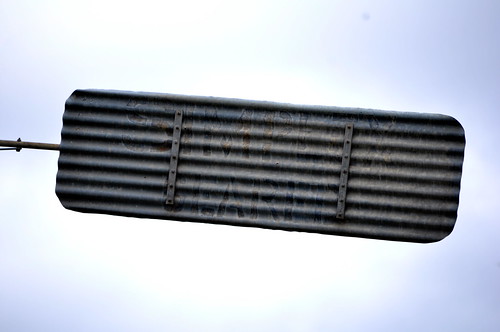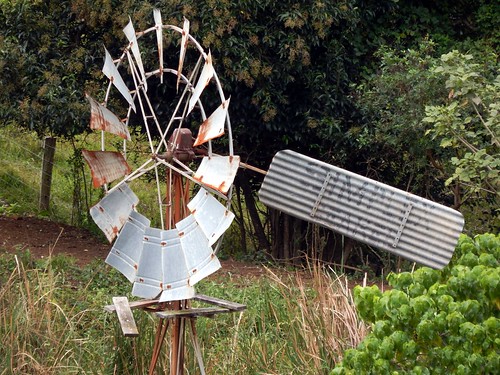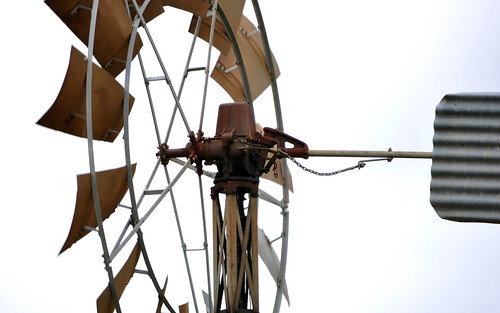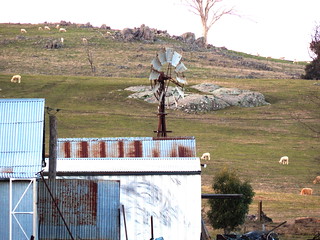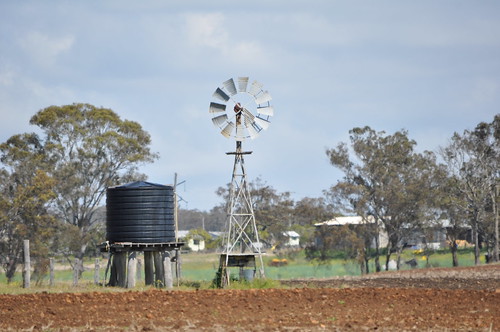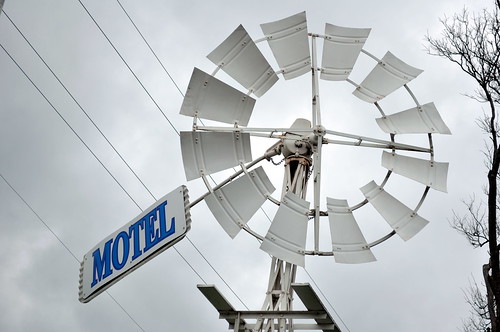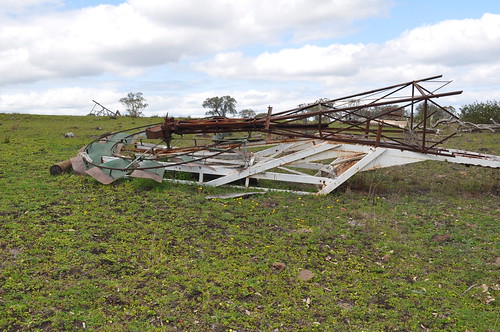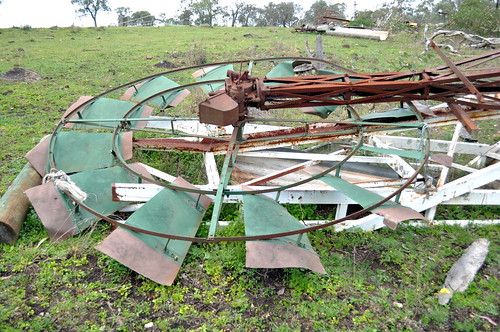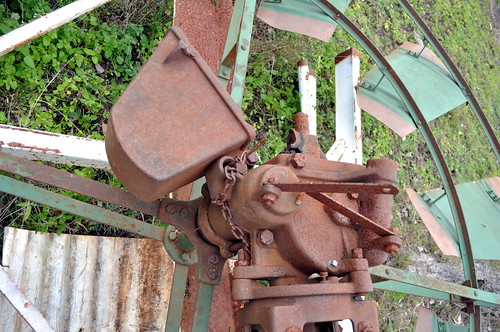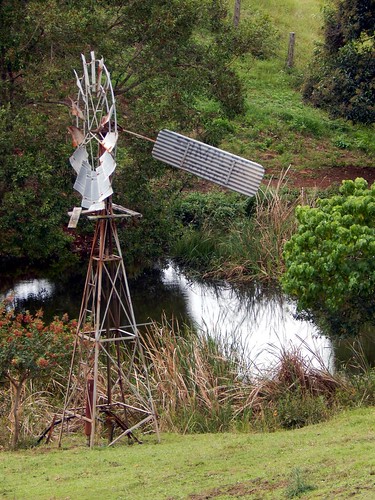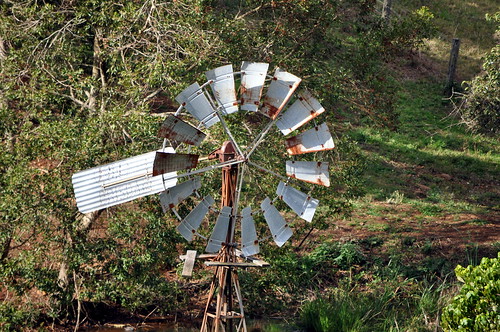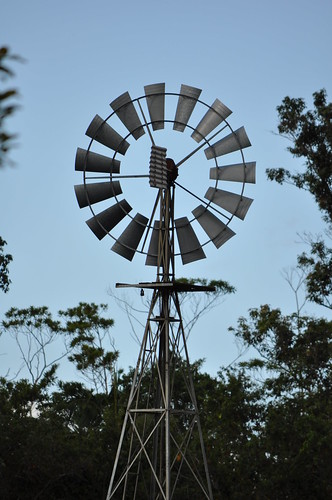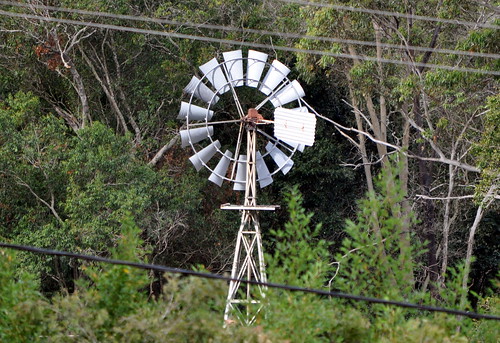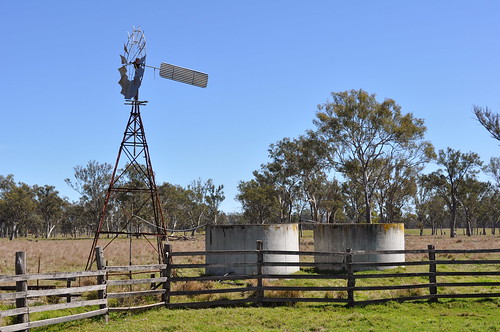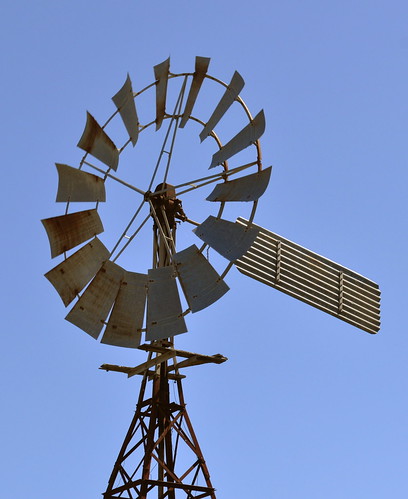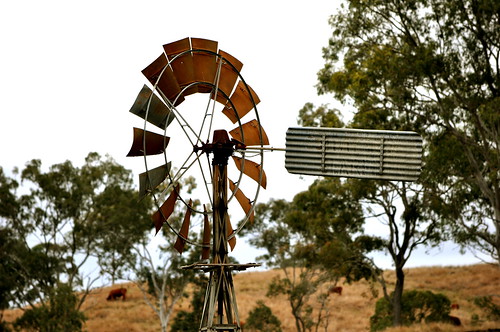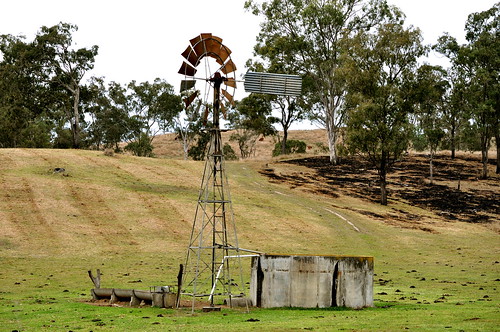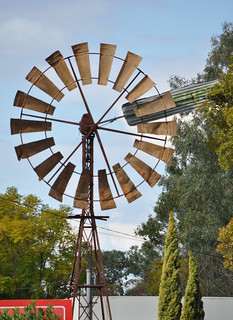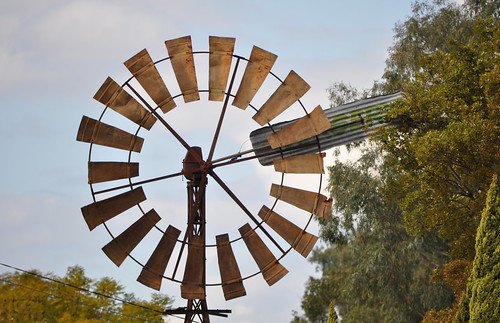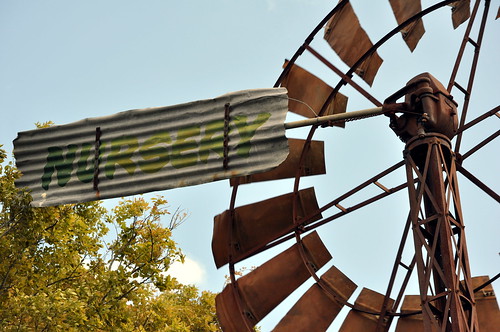Representatives of the IBC Geared Simplex windmill (left to right): 8 -foot, 10-foot and 14 foot windwheels
IBC Geared Simplex windmills were regarded by McCook (1990) as a rugged and reliable design. They were designed by Cecil Palmer Jessop in the early 1930s but had no patent, possibly because they were derived from two previous IBC/Jessop windmills. The Geared Simplex turntable and windwheel were scaled-down versions of the direct-acting Simplex of the 1920s. Similarly, its pullout is a scaled down and very slightly modification of the self-oiling Simplex of the 1930s. The first version built of the Geared Simplex was the 8-foot windwheel (March 1931), with the remaining sizes released in April 1933. These windmills were built until the late 1960s. Although the end date of production is currently unknown, it does appear that IBC dropped windmills quickly after they were brought out by Pacific Dunlop in 1969 based on a general catalogue from that period. The last mention of any IBC windmill in an IBC publication was for a pump rod guide in an undated engineering guide published in the early 1970s.
It is interesting to note that there is a similarity between the windwheels of the 8-foot Simplex and the 8-foot Comet Meteor mills, especially because Cecil Jessop worked for both companies, and that both mills came out within a few years of each other (IBC marketed the Geared Simplex mills from 1931, while Comet marketed the Meteor from 1933). Ultimately, the Geared Simplex outlasted the Meteor (which was made from 1933-1948).
Identification data
Tip – mouse over each image for details of each windmill shown. Click to view large images in Flickr; try using right click and “open in new tab” to avoid loosing this page.
Serial numbers
Unlike most other manufacturers, IBC didn't apply individual mill numbers to the majority of the Geared Simplex production run. A few early mills are known to bear serial numbers on the rear of the casing (known examples being Serial 2 and 3 mills), but anything from around the mid 1930s onwards do not have mill numbers on the gearbox. Instead, IBC used the concept of a serial number more like a Mark or Model number. I've been compiling what constitutes the various Serial numbers for an article in The Windmill Journal of Australia and New Zealand, and hope to have that out by the end of 2020.
Tower & platform
IBC Geared Simplex mills can be identified by their 4-post tower, of which the upper part abruptly becomes vertical and has tight cross-bracing. Nominally, the cross bracing was intended by IBC to be installed on the outside of the tower, however few people seem to have bothered paying that much attention to IBC's manuals, as many mills had the cross bracing installed inside the tower. This could lead to difficulties with servicing the pullout later on in the mills' life.
The platform is square, mounted on angle iron bolted to the tower and is made of hardwood planks.
Most IBC mills are on their original or native towers, however you can occasionally find one mounted on another 4-post tower, like this Alston well tower.
Occasionally, someone gets crafty and repurposes the IBC towers. Above is a photo of a 6-foot Southern Cross IZ-A mill atop a four-post IBC tower. I also found an IBC tower repurposed into a pump jack mount in Northern New South Wales in early 2020.
Windwheel
Each windwheel section had three sails across all windwheel sizes; the windwheel composition for each size is listed in the table below. The sails were broad and made of sheet steel rolled and then beaded either side of the sail bracket attachments for strength.
The sail brackets were made of flat steel bent into a C-shape, bolted to both the wheel rims and the sails. Note the use of square nuts on the sails.
Wheel arms were flat steel, while the wheel rings were made of angle iron. The entire windwheel assembly was bolted together. Note the use of angle iron stubs running across each wheel arm, to which the wheel hoops were then bolted, and the spring-washer to hold these components in place.
The hub or spider was cast iron with flanges for the wheel arms and was actually threaded, bolting on to the spindle. A locking bolt (or two) held everything in place on the spindle.
Table - Windwheel composition data for all IBC Geared Simplex windmills
Note: 3 sails per wheel section
regardless of windwheel size
|
8-foot
|
10-foot
|
12-foot
|
14-foot
|
Wheel arms/sections
|
4
|
5 - early 1930s
4 - mid 1930s-1944
5 - 1944 onwards
|
5
|
6
|
Sails
|
12
|
12 or 15
|
15
|
18
|
10-foot mills with 4 wheel arms can be told apart from all 8-foot mills if they are on their original towers because the wheel comes much closer to the platform in the 10-foot size. Both sizes of mill used the same tower.
Head casting
The gearbox casting is square and very compact, with a conspicuous housing for the the tail casting on the rear. The spindle is accommodated in a cylindrical casting offset to one side of the head. The crankshaft has a small pinion mounted on it that drives the main gear, which in turn drives an usual paired pitman-crosshead assembly, and then the pump rod. The crosshead slides up and down a round bar mounted in the centre of the gearbox.
The helmet is cast and therefore very solid. It is attached to the gearbox casting by a hinge and is held shut by a wing nut and has a nub on the rear surface to hold the tail casting in place (image above, right).
All rotating components run on ball bearings, including the turntable which has two bearing races machined into it. The pumprod protrudes from the head in the photo at right; there is normally a long pipe that incorporates the furling mechanism that sits over it.
Tail
The tail is corrugated galvanised sheet iron that bears the marque IBC BRISBANE on one side and SIMPLEX GEARED on the other. The marque was applied via a stencil. Mills sold by Moffat-Virtue in New South Wales bear that distributor’s name on the tail sheet instead of the above markings. Some windmills are also known to have been sold as “Apollo” windmills, with the size of the windwheel in feet appended to this name (e.g. Apollo-8 for the 8-foot windwheel).
The tailbone is a length of pipe mounted in a dedicated tail casting that sits in a casting incorporated into the head. There is a spring damper on the tail that absorbs sudden and violent tail movements in response to a strong wind gust. The pullout is a steel chain that runs through holes in the main casting. There is also nub on the rear of the helmet that holds the tail casting in place (see images under Head Casting, above).
General notes
Being a Queensland-designed and produced windmill, IBC Geared Simplex mills are more commonly found there, but are nowhere near as ubiquitous as the Southern Cross Z and IZ patterns are in that area. However, as there were distributors in all states and territories of Australia, examples can be found Australia-wide. South-eastern Queensland and north-eastern New South Wales are good areas to find them, and I have been told they are also reasonably common in the Orange area (T. Glastonbury, pers. comm.). These mills were not popular with windmill repairers due to the tight cross-bracing of the upper tower making it difficult to service them – the bracing prevents access to the complex furling mechanism and makes removal of pump rods difficult (see notes under the main IBC page).
Gallery
8-foot windwheel (Serial 2)
10-foot windwheel – 4 wheel arms (early-mid-1930s Serial 3)
10-foot windwheel – 5 wheel arms (Serial 3B & 3C)
14 foot windwheel (Serial 5)
